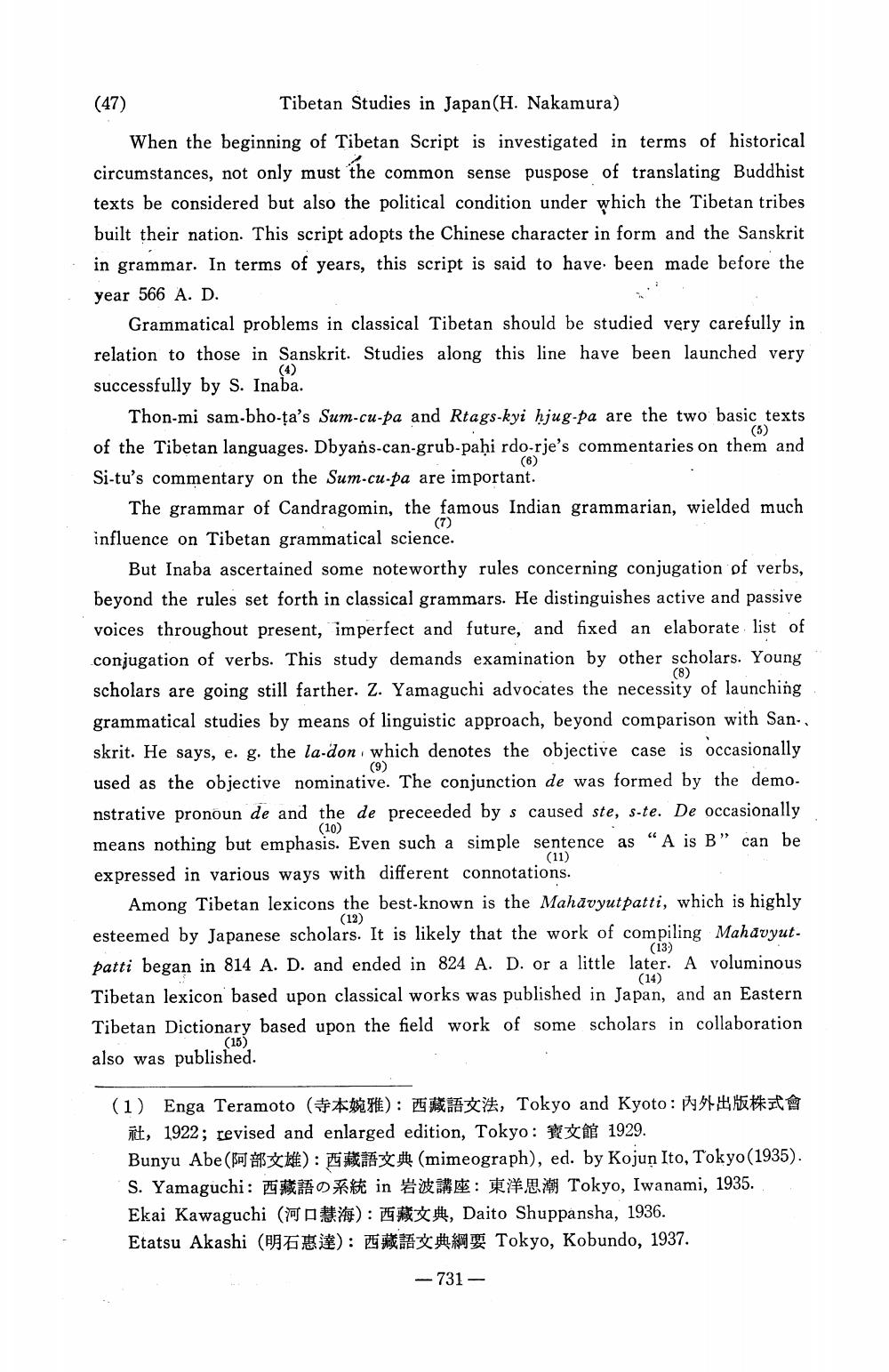________________
(47)
Tibetan Studies in Japan(H. Nakamura)
(5)
When the beginning of Tibetan Script is investigated in terms of historical circumstances, not only must the common sense puspose of translating Buddhist texts be considered but also the political condition under which the Tibetan tribes built their nation. This script adopts the Chinese character in form and the Sanskrit in grammar. In terms of years, this script is said to have been made before the year 566 A. D.
Grammatical problems in classical Tibetan should be studied very carefully in relation to those in Sanskrit. Studies along this line have been launched very successfully by S. Inaba.
Thon-mi sam-bho-ta's Sum-cu-pa and Rtags-kyi hjug-pa are the two basic texts of the Tibetan languages. Dbyans-can-grub-paủi rdo-rje's commentaries on them and Si-tu's commentary on the Sum-cu-pa are important.
The grammar of Candragomin, the famous Indian grammarian, wielded much influence on Tibetan grammatical science.
But Inaba ascertained some noteworthy rules concerning conjugation of verbs, beyond the rules set forth in classical grammars. He distinguishes active and passive voices throughout present, imperfect and future, and fixed an elaborate list of conjugation of verbs. This study demands examination by other scholars. Young scholars are going still farther. Z. Yamaguchi advocates the necessity of launching grammatical studies by means of linguistic approach, beyond comparison with San.. skrit. He says, e. g. the la-don which denotes the objective case is occasionally used as the objective nominative. The conjunction de was formed by the demo. nstrative pronoun de and the de preceeded by s caused ste, s-te. De occasionally means nothing but emphasis. Even such a simple sentence as “A is B" can be expressed in various ways with different connotations.
Among Tibetan lexicons the best-known is the Mahāvyutpatti, which is highly esteemed by Japanese scholars. It is likely that the work of compiling Mahavyutpatti began in 814 A. D. and ended in 824 A. D. or a little later. A voluminous Tibetan lexicon based upon classical works was published in Japan, and an Eastern Tibetan Dictionary based upon the field work of some scholars in collaboration also was published.
(8)
(9)
(11)
(12)
(13)
(14)
(15)
(1) Enga Teramoto (* ): 2
, Tokyo and Kyoto: HERI mit, 1922; revised and enlarged edition, Tokyo: ** 1929. Bunyu Abe (BA ): G IGI # (mimeograph), ed. by Kojun Ito, Tokyo(1935). S. Yamaguchi:
* in
:
Tokyo, Iwanami, 1935. Ekai Kawaguchi (m ): #*#, Daito Shuppansha, 1936. Etatsu Akashi (9 ): ** Tokyo, Kobundo, 1937.
- 731 —




